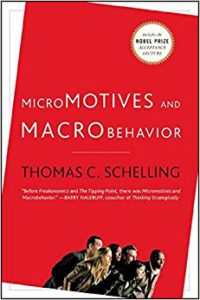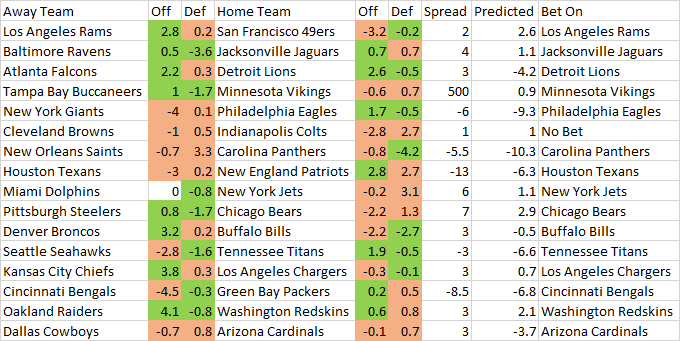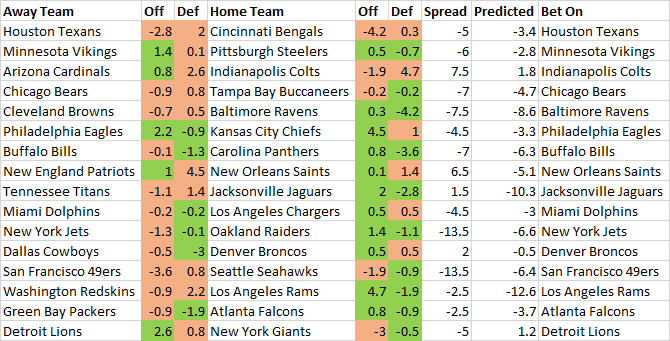More proof the Reds lag behind in analytics. I figured something like this was going to happen when I saw that the Dodgers were accumulating guys with high spin rates and that Cingrani had one of the highest.
Book Review – Micromotives and Macrobehavior
Thanks to Crisson Jno-Charles for the guest book review!
Micromotives and Macrobehavior
by Thomas Schelling, 1978
Micromotivates is a proto-pop economics book by the Nobel Prize winning economist Thomas C. Schelling. The book was first published in 1978, and it expanded on research Schelling conducted on how self-segregation can arise as a long-run consequence of moderate preference for neighbors of a similar race.
The friend who first introduced me to the book mentioned that it predates our modern expectations of popular social-science books. Their assessment is mostly correct. Schelling’s writing comes off as accessible, but not to the point of diluting his underlying economics or game theory lesson. It doesn’t entice the reader with “here’s this not-obvious-thing that we think is incredibly important, that once you’ve learned it, will make you feel super smart” — a feature common to modern day pop social science books (and TED talks, which I enjoy by the way). It reads more like a Summer elective lecture on Game Theory. You’ll learn a thing or two and possibly perceive human organizational a little different, at least for a little while.
But it also plods along, sometimes belaboring a concept and I mostly skimmed the latter quarter of the book. But you should read it anyway and especially so the first half.
Energetic 20170921
Nuanced view of whether or not the U.S. should try to bury more power lines.
Should the demand response baseline be raised in heat waves? Shouldn’t you be expected to use more power than average when the temperature spikes?
One utility wades in the distributed energy resources (DER) pool.
Real News 20170920
NFL Picks – Week 3 of 2017
My INFORMS 2017 Presentations
Sunday, 8:00-9:30am, SA37, Linking Delay Announcements, Abandonment, and Staffing: A Behavioral Perspective, Room 352B
Monday, 8:00-9:30am, MA04, Mind The Gap: Coordinating Energy Efficiency and Demand Response, Room 320A
Tuesday, 4:35-6:05pm, TE04, Utility Ownership of Decentralized Combined Heat and Power, Room 320A
The two energy papers of my dissertation were invited. The call center paper was scheduled for presentation with the other finalists in the in the Service Section Best Student Paper Competition.
Rounding the Bases 20170915
Energetic 20170914
Real News 20170913
MIT to offer economics+computer science degree. Good for all sorts of online marketplaces that match buyers and sellers.
Owners of the Tesla 60kWh version of its Model S and Model X actually have the same battery as the 75kWh vehicles but the battery has been purposely limited or “damaged” to provide only 60KWh of mileage. Is is really less expensive for Tesla to build more expensive batteries for all cars (including the lesser version) than to create and keep two inventories of car batteries? Probably.
NFL Picks- Week 2 of 2016
Using a model developed with Wayne Winston, I post the NFL bets I would make against the spread each week. My model uses scores from previous weeks to predict the results of the current week of games. Here are my 2014, 2015, and 2016 betting results, where I am a combined 310-307 against the spread, including a terrible 2016-17 campaign that went 105-133 in an unpredictable year.
Now, it is week 2, so I only have one week of results with which to build my model. And it’s based on scores alone. So it only knows the scores of week 1, and, for example, it does not know that New England is typically a really good team. Nonetheless, the model has been profitable when run over the last 30+ years, even in week 2. Given that, here are the predictions for week 2:


